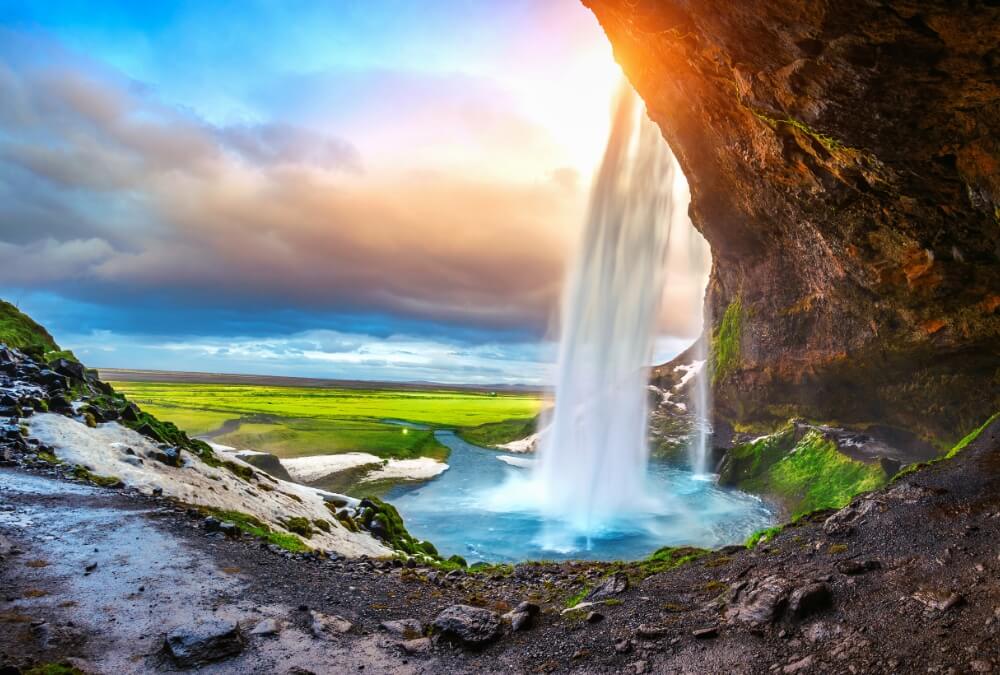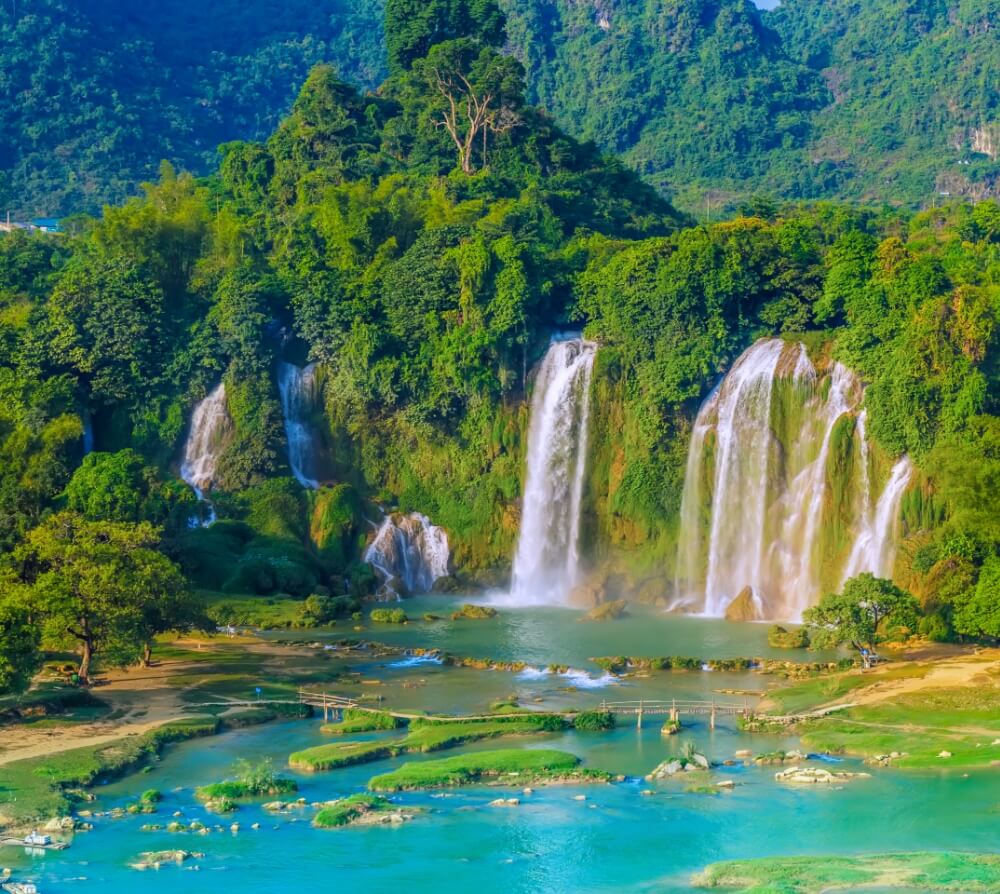
Freshwater, or freshwater bodies, is naturally occurring liquid or frozen water with low concentrations of dissolved salts and all other dissolved solids. Although this term does not include sea water and brackish water. It does not include water that is rich in minerals that are not salty, such as chalybeate springs. Freshwater may combine ice and meltwater in ice sheets, glaciers, snowfields and icebergs. Natural precipitation such as rain, snow, hails and surface runoff that creates inland water bodies such as wetlands, ponds, lakes, rivers, surface water, streams, underground water, as well as the groundwater contained in aquifers, groundwater rivers.
Fresh water is not always drinking water, i.e., it is safe for humans to drink. Most of the world’s freshwater, the level of water (surface and groundwater) is extremely unsuitable for human consumption without treatment. Fresh water can easily become polluted by human activities or due to naturally occurring processes such as erosion.
Get to know the freshwater resources of the world

Ice and iceberg
Ice includes the iceberg that covers the earth’s surface, glacier and snow cover on the high mountain peaks, which make up 68.7 percent of the world’s fresh water. Many of the world’s major rivers, such as the Mekong River, Salween River, etc., also originated from the melting of these snow and glaciers.
Subsurface water or underground water
Subsurface water is fresh water that is trapped in voids of soil, rock or water that flows within aquifers or aquifers below groundwater level. Underground water is caused by seepage into the basement of surface water. The case of natural discharge of groundwater that exceeds its storage capacity is natural springs and seepage into the sea. Underground water accounts for 30.1% of the total fresh water on Earth and humans exploit it for pumping, also known as “groundwater.” However, groundwater can become salty if it occurs naturally or caused by irrigation, especially in coastal areas or with high levels of underground salt deposits.


Subsurface water or underground water
Subsurface water is fresh water that is trapped in voids of soil, rock or water that flows within aquifers or aquifers below groundwater level. Underground water is caused by seepage into the basement of surface water. The case of natural discharge of groundwater that exceeds its storage capacity is natural springs and seepage into the sea. Underground water accounts for 30.1% of the total fresh water on Earth and humans exploit it for pumping, also known as “groundwater.” However, groundwater can become salty if it occurs naturally or caused by irrigation, especially in coastal areas or with high levels of underground salt deposits.

Surface water
Surface water includes rivers, canals, streams, lakes, man-made bodies of water including freshwater wetlands. Surface water is obtained from the falling water in the form of rain and snow and is lost naturally by evaporation, seepage into the basement and outflow into the sea-ocean. The main source of fresh water that is used by humans. It accounts for only 0.3 percent of the world’s fresh water.
The fresh water situation of the world that we should pay attention to

The increase in the world’s population today including global economic growth is the driving force for increasing water demand in all sectors. As a result, there is a risk of a world water crisis that is highly probable in the future.
In addition, the current global warming and climate change, the average temperature of the Earth’s surface has increased and global average sea levels have risen from the melting of land glaciers. The volume of water in the ocean expands, global warming also affects the water cycle on Earth. Tropical cyclone variations created various disasters, drought conditions, long periods of rain or severe floods. This affects the agricultural and industrial sectors, which are the cornerstones of the global economic stability. Due to the world’s water.
Shortage problem, the United Nations has emphasized and campaigned for many countries to conserve water by designating March 22nd of every year as World Water Day.
Since the year a report on the world’s water situation has shown that 1 in 5 of the world’s population does not have access to clean water. shortage of drinking water and half of the world’s population lacks sanitary water. More than 5 million people have died from diseases caused by unclean water in the past 10 years. The International Institute for Water Management (IWMI) estimates that by 2025, around 4 billion people in 48 countries (two thirds) of the world’s population) will face the problem of water scarcity. While the World Bank estimates that in the next 30 years, half of the world’s population, there will be a water shortage if water lavish use continues as it is now 1992 onwards.
Therefore, we need to help each other maintain the limited freshwater resources to have effective water management, sufficient to sustain the ecological balance and complete utilization for future human beings.
We also need to take into account the environmental issue as well for the management of drinking water, used water and waste water in accordance with the policy of (IWMI) and in the selection of water filtration systems or water treatment to meet the standards according to the regulations of government agencies.
For having clean water free from toxic substances for consumption, try AFM® glass filter media. Made from recycled green and brown glass with cationic and negative coating for good trap of various toxins and heavy metals. It can also be used for domestic water filtration and industrial wastewater filtration.


Since the year a report on the world’s water situation has shown that 1 in 5 of the world’s population does not have access to clean water. shortage of drinking water and half of the world’s population lacks sanitary water. More than 5 million people have died from diseases caused by unclean water in the past 10 years. The International Institute for Water Management (IWMI) estimates that by 2025, around 4 billion people in 48 countries (two thirds) of the world’s population) will face the problem of water scarcity. While the World Bank estimates that in the next 30 years, half of the world’s population, there will be a water shortage if water lavish use continues as it is now 1992 onwards.
Therefore, we need to help each other maintain the limited freshwater resources to have effective water management, sufficient to sustain the ecological balance and complete utilization for future human beings.
We also need to take into account the environmental issue as well for the management of drinking water, used water and waste water in accordance with the policy of (IWMI) and in the selection of water filtration systems or water treatment to meet the standards according to the regulations of government agencies.
For having clean water free from toxic substances for consumption, try AFM® glass filter media. Made from recycled green and brown glass with cationic and negative coating for good trap of various toxins and heavy metals. It can also be used for domestic water filtration and industrial wastewater filtration.
